
When I ask the taxi driver to take me to the house of mask-maker Álvaro Duarte, he gives me a doubtful look and doesn’t respond. I ask him a second time to take me to Pata’e Buey and he says, “Now I know!”
Álvaro and his wife Melania Vásquez welcome me into the hallway of their house and workshop in the Santa Cecilia neighborhood of Santa Cruz, where they live with Álvaro’s mom, one of two daughters, a grandson, four dogs, four cats and 45 giants. Everywhere you look there are roosters, dragons and giant pirates made of paper and glue watching us, laughing loudly but motionlessly. The couple have been making them for 40 years for the Santa Cruz National Typical Festival.
Álvaro walks slowly and with a sway towards a rocking chair where he sits down, but his walk isn’t because he is 68 years old. He’s moved this way his whole life, and in Santa Cruz, nicknames are routine.
“They call me Pata’e Buey (ox leg) because I walk funny. That’s how I came out. Before, they used to give people nicknames based on their physical characteristics, like Lanky, Cat Poop, Hanky, Curly.”
The first thing he does when he sits down next to me is hand me two copies of an old interview conducted 13 years ago by the newspaper Al Dia as though he were handing out a program before a show.
He’s kind and chatty. At first, the hearing impairments he’s been suffering for 15 years don’t seem to affect him. He can’t hear in his left ear and the right one is aided by a cochlear implant he received 12 years ago.
While it’s much better than the hearing aid he previously had, he hasn’t been able to take advantage of it because the therapy is expensive and isn’tt covered by the public health system.
“I just take the implant out when it’s lightening, or when I’m arguing with Melania.”
He leans to his right in order to hear better, places his arm on the rocking chair’s armrest and starts to summarize his life, which seems to be made up of many different parts.
I’m like poverty. I get into everything.”
The Other Faces
Pata’e Buey recalls that he started working at age 15 in his uncle’s auto repair shop where he used to go everyday after school in order to learn about the profession. He became very good. He says “no joke” that he was, for a while, the only certified mechanic in Santa Cruz for several different makes and models of cars.
He also was in charge of projecting films at the defunct Adelita de Santa Cruz Theatre. He performed the same job in seven other movie theatres in San Jose, including Variedades.
He was a fire chief for the volunteer firefighters, but he had to quit after a short stint. He had problems hearing the radio that was used to communicate emergencies, forcing him to resign. He says jokingly that his hearing impairments may be why three blocks in downtown Santa Cruz burned in 1993.
Now he has a photocopy machine in the Santa Cruz court building and he sometimes works as a news correspondent. But it was his mask making that made him famous in town.
The Factory of Facial Expressions
When he has trouble hearing, Melania is there to repeat questions to him louder. She’s also around in order to finish Pata’e Buey’s sentences before he can.
She continues the story as the mask maker goes out to welcome a doctor from the public hospital that came on a motorcycle to give them flu and influenza vaccination shots.
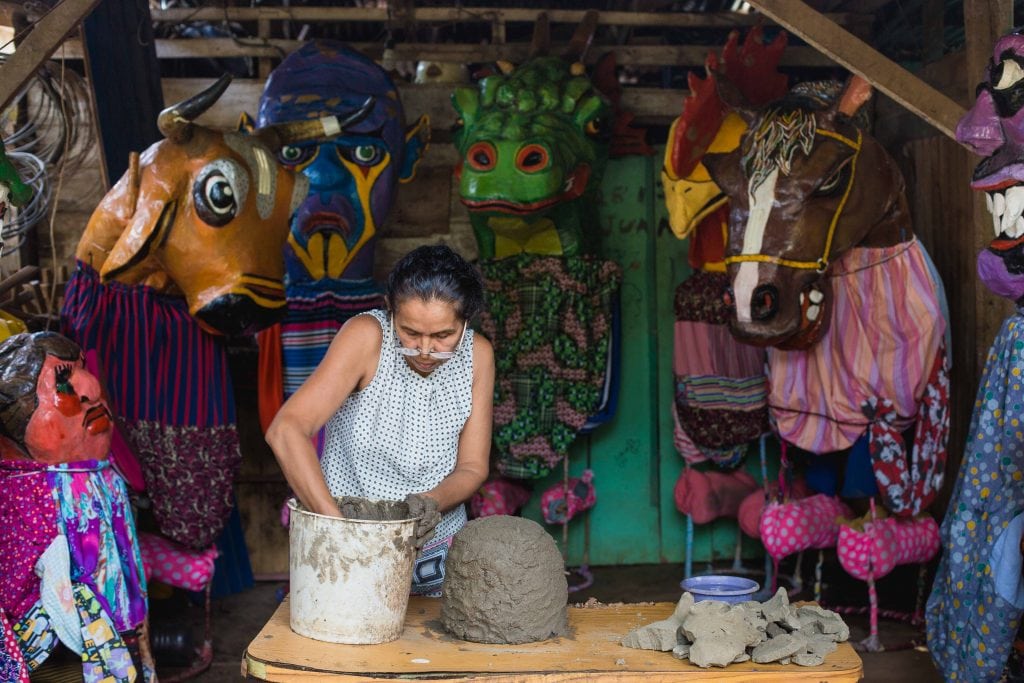
Melania Vásquez reuses clay from old masks in order to give life to new ones.
Melania is his right hand woman in the mask workshop, which opened in 1985 when Pata’e Buey took charge of organizing the masquerades for the festival.
“Before a man they called Avioneta organized it. When his health got bad, he took his place and looked for boys to dance with the masks and started to experiment with making them.”
Pata e Buey makes the rod structures that support them, Melania sews their dresses and also makes small masks for children. Together they repair the deteriorating masks in their workshop and many of them have been bought for 45 years from another masker in the area: Rafa Álvarez.
Melania speaks with a degree of nostalgia about the present, because she knows how ephemeral her life and those of her paper children are.
That’s why the couple passes the knowledge down to young people in the community. The same boys who make the giants dance help paint them and are learning how to build them. Three years ago, a masquerade parade for children was started that eaves from Pata’e Buey’s house.
“Some day the masquerades will be gone, and we will too. That’s why we have to work hard everyday to preserve this,” Melania says.


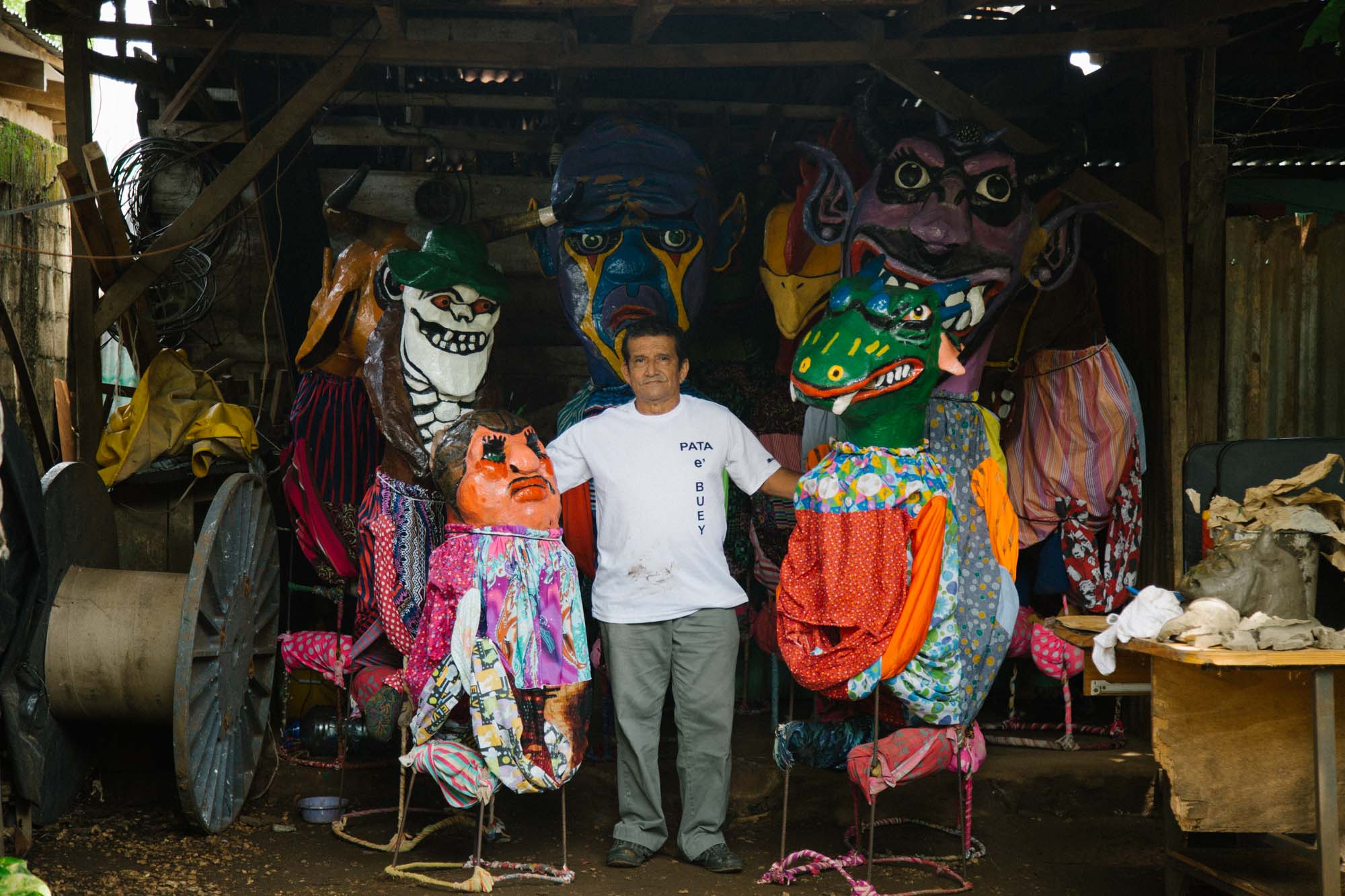
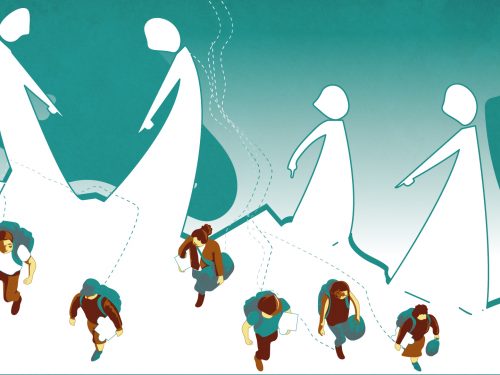
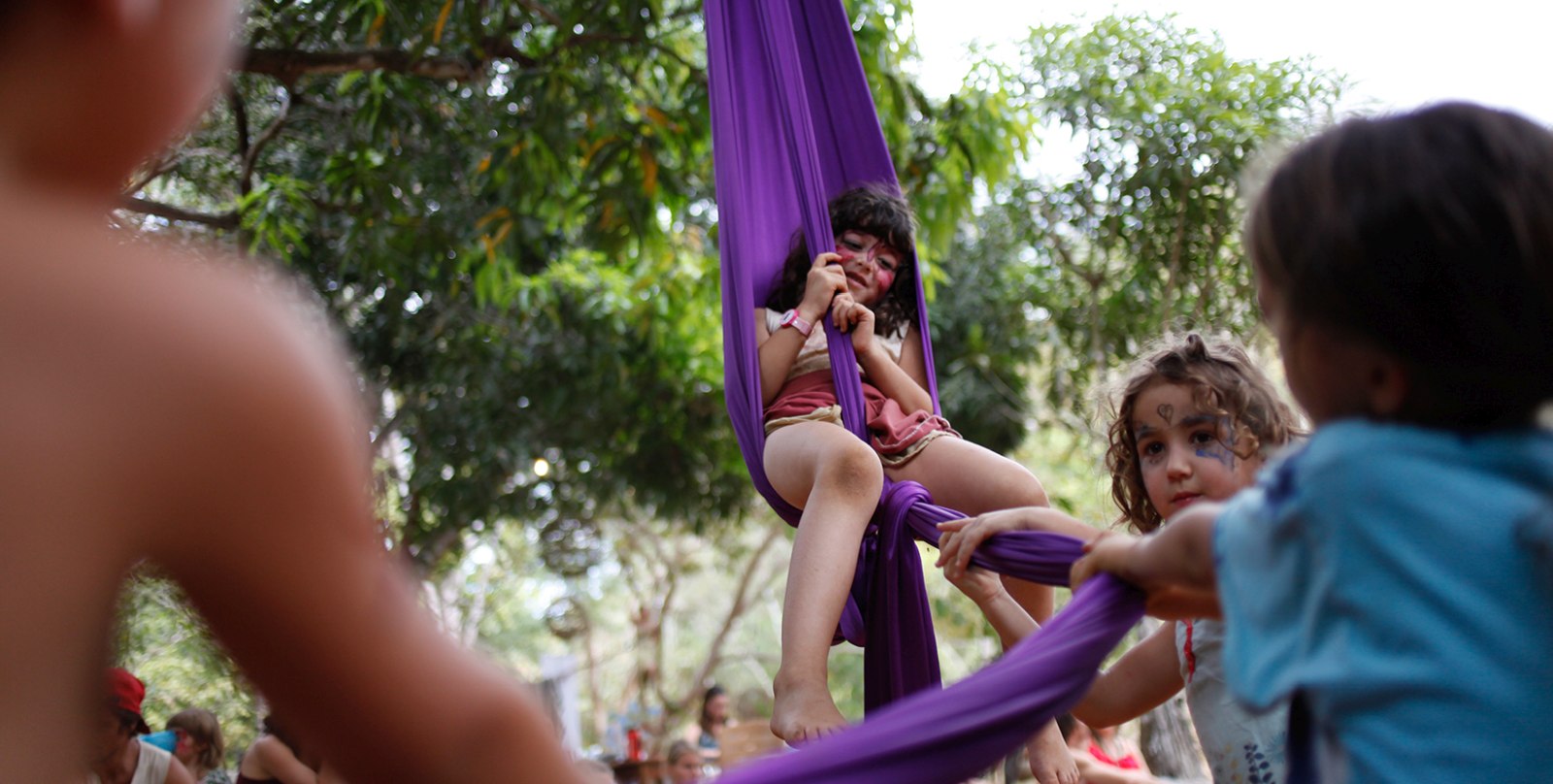
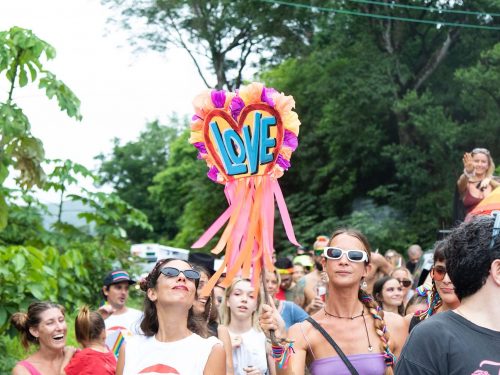

Comments